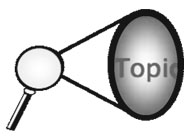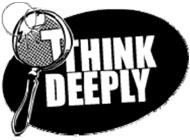“Language, whether used to express ideas or to receive them, is a very powerful tool and should be used to foster the learning of Mathematics”
In Project M², students are encouraged to think like practicing mathematicians. Students communicate so they can learn concepts in depth and understand what it means to communicate mathematically. There are several characteristics to this type of communication:

- The communication is a community activity, so students discuss their ideas with both the teacher and their peers;
- Students communicate to make sense of the problems and possible solutions;
- Both the reasoning process and the answer are valued;
- Students regularly justify their ideas;
- Misunderstanding and misconceptions are used as opportunities to guide the discussion;
- Several ideas are considered and revised as students get closer to accepted mathematical truths.
In order to communicate in this manner, students need to work on problems that warrant this type of communication (NCTM, 2000). Worthwhile mathematical tasks include ones that focus on significant mathematics, take into account diverse ways of learning and understanding, engage students mentally, encourage students to problem solve and reason, and have multiple solutions and/or answers (NCTM, 1991).
Verbal Communication
Project M² units help students learn how to communicate mathematically by providing the following strategies for verbal communication:

- Speaker and listener roles build a conducive learning environment.
- Talk moves provide teachers with guidance on the kinds of questions to ask students.
- A Talk frame that helps teachers guide the discussion. It also can serve as a starting point for student writing.
Written Communication

The Project M² units also help teachers support student learning about how to communicate mathematically through strategies focused on written communication. Written communication comes in many forms, such as words, drawings, and numbers. Writing is one of the vehicles advancing student understanding through reflection of one’s own and other’s ideas. The Think Deeply questions are a central feature of the units.
In each Project M² unit, writers’ roles are outlined to build a supportive learning environment. The writing for the Think Deeply questions also is introduced in phases. Finally, guidance on how to support student writing is offered through the use of a writing center and teacher and student feedback.
